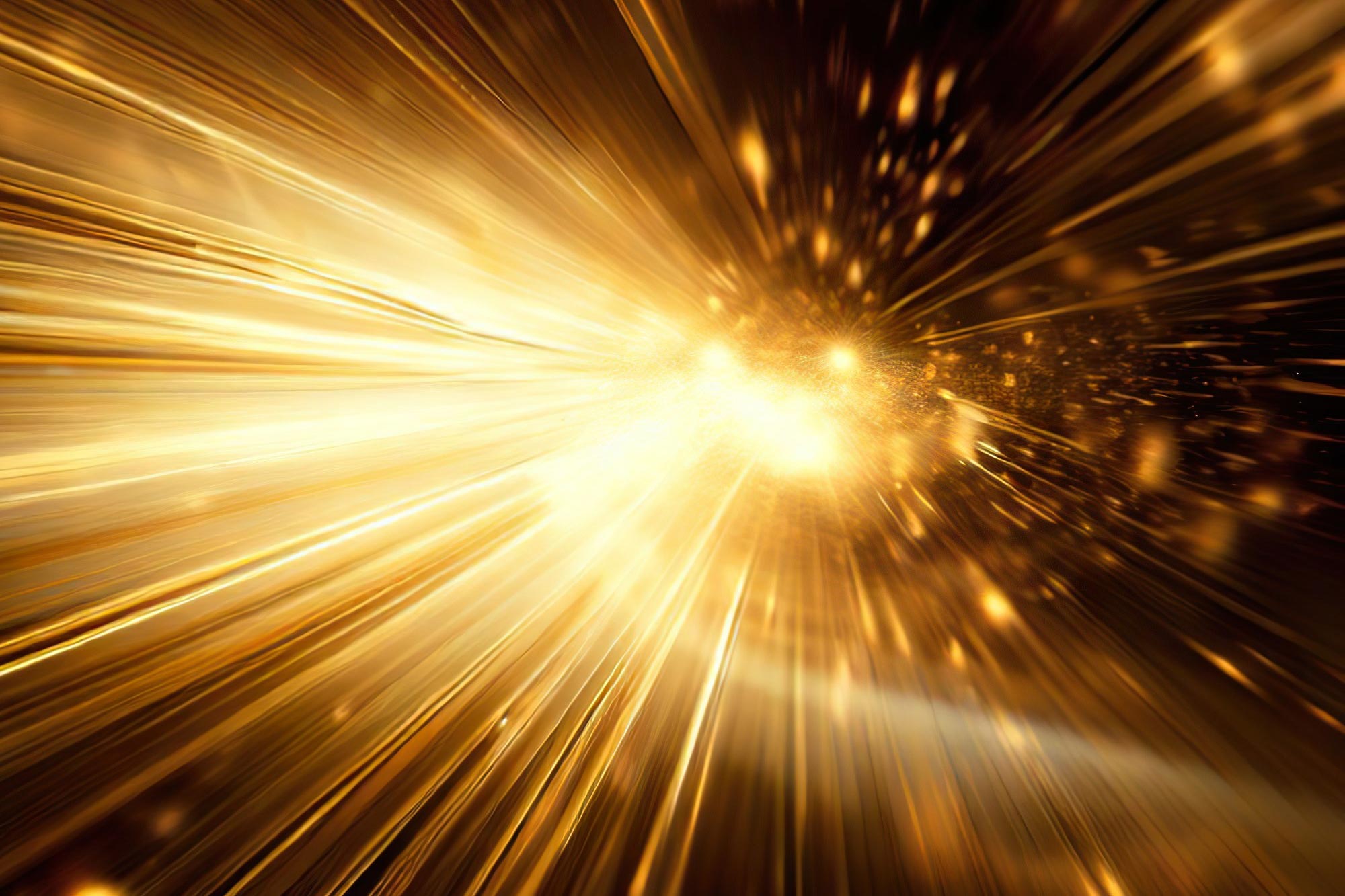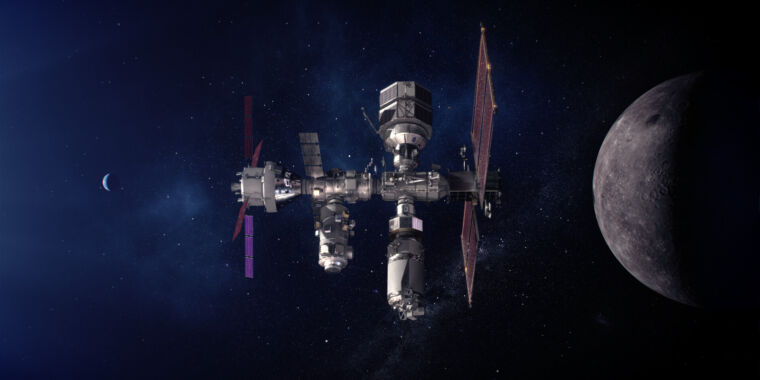
Los físicos del RHIC estudian los cambios de fase en la materia nuclear a partir de colisiones de iones de oro para identificar un punto crítico en estas transiciones. Su investigación, que consiste en reconstruir y examinar el plasma de transición quark-gluón, un estado de la materia presente después del Big Bang, sugiere que las fluctuaciones en la composición de los núcleos ligeros podrían señalar este punto de inflexión. Ciertas anomalías en los datos indican una posible variabilidad, pero se requiere más investigación para confirmar el hallazgo.
El análisis de núcleos livianos que surgen de colisiones de iones de oro proporciona información sobre los cambios de fase de la materia primordial.
Físicos que analizan datos de la destrucción de iones de oro en el Relativistic Heavy Ion Collider (RHIC), una instalación de usuario de la Oficina de Ciencias para la Investigación de Física Nuclear del Departamento de Energía de EE. UU. (DOE) en el Laboratorio Nacional Brookhaven del DOE, están buscando evidencia de un llamado punto crítico en el oro La forma en que la materia nuclear cambia de una fase a la siguiente.
Nuevos hallazgos de miembros de STAR Collaboration en RHIC publicados en la revista
The “heart” of the STAR detector at Brookhaven’s Relativistic Heavy Ion Collider is the Time Projection Chamber, which tracks and identifies particles emerging from ion collisions. Credit: Brookhaven National Laboratory
“You can imagine the nuclear phase diagram as a bridge connecting the past—the Big Bang and the early universe—to visible matter as we know it today, and even neutron stars,” said Xiaofeng Luo, a member of RHIC’s STAR Collaboration from Central China Normal University (CCNU), who led a group of students in this analysis. “It’s important scientifically and to human understanding of where we come from.”
Critical point search party
RHIC’s collisions recreate a hot, dense state of matter that existed for a tiny fraction of a second right after the Big Bang some 14 billion years ago. This matter, called a quark-gluon plasma (QGP), is a soup of “free” quarks and gluons—the building blocks of the protons and neutrons that make up atomic nuclei. Colliding heavy ions at various energies allows RHIC physicists to study how the collisions create this primordial soup and how it transitions back into ordinary nuclear matter.
To look for signs of a critical point—where the type of transition from QGP to ordinary matter changes from a smooth crossover (where two phases coexist, as when butter gradually melts on a warm day) to a sudden shift (like water suddenly boiling)—the scientists look for fluctuations in things they measure coming out of the collisions.

Mapping nuclear phase changes is like studying how water changes under different conditions of temperature and pressure (net baryon density for nuclear matter). RHIC’s collisions “melt” protons and neutrons to create quark-gluon plasma (QGP). STAR physicists are exploring collisions at different energies, turning the “knobs” of temperature and baryon density, to look for signs of a “critical point.” Credit: Brookhaven National Laboratory
A previous study found tantalizing signs of the type of fluctuations scientists would expect around the critical point by looking at the number of net protons produced at the various collision energies. Protons, each made of three quarks, form as the QGP cools, and can serve as stand-ins for the overall baryon density (baryons being all particles made of three quarks, which also includes neutrons).
Scientists expect that as the baryon density of matter increases, it’s more likely these protons and neutrons will coalesce, or come together, to form lightweight nuclei when the QGP “freezes out.” So, in this study, they tried to track the yield of one type of lightweight nucleus known as a triton—made of one proton and two neutrons. Seeing fluctuation patterns in triton production might help them zero in on the critical point.
As in the previous study, the data were collected by the Solenoidal Tracker at RHIC, a particle detector known as STAR, during phase one of the Beam Energy Scan (BES-I). This program recorded snapshots of collisions at various energies and temperatures from 2010 to 2017, capturing changes in the numbers and types of particles streaming out. This new analysis builds upon a paper that Brookhaven physicist Zhangbu Xu and colleagues published in 2017, predicting that the yield ratio of light nuclei such as tritons should be tied to the critical point.
Tracking fluctuations in the yield ratio of lightweight nuclei such as deuterons and tritons emerging from collisions within the STAR detector should be sensitive to a critical point. The data (red points) mostly match predictions (shaded areas), but two outlying points may be signs of the types of fluctuations scientists expect to see around the critical point. Credit: STAR Collaboration
“The formation of these light nuclei requires a certain baryon density,” said Dingwei Zhang, a member of RHIC’s STAR Collaboration and PhD student at CCNU. “If the system is approaching the critical point, the baryon density fluctuates a lot. So, we wanted to see through this analysis if we will see the fluctuations, therefore pin down the critical point.”
The data at most of the collision energies analyzed matched theorists’ models of how new nuclei would form as protons and neutrons come together through coalescence. But at two points—from collisions at 19.6 billion election volts (GeV) and 27 GeV—the data jumped out of the baseline predicted by the model, hinting at those coveted fluctuations.
The points offer a combined significance that still falls below the level required to claim a physics discovery.
“We hoped this analysis would be sensitive to the critical point,” Luo said. “We are very happy to see these outliers here and it’s certainly encouraging. Eventually, if the critical point exists in the energy range we covered, all these observables should give a consistent signal.”
Researchers are looking forward to seeing what analyses of a plethora of additional collision data will show. In 2021, the STAR collaboration successfully completed the second phase of the Beam Energy Scan (BES II), which captured gold smashup snapshots at various RHIC energies, including the lowest energy of 3 GeV.
“We hope that the BES II data will help us enhance the sensitivity to a critical point signal,” Luo said. “With higher statistics, we may be able to reach the level of significance required to claim a discovery. And that would be big.”
Reference: “Beam Energy Dependence of Triton Production and Yield Ratio (Nt×Np/N2d) in Au+Au Collisions at RHIC” by M. I. Abdulhamid et al. (STAR Collaboration), 16 May 2023, Physical Review Letters.
DOI: 10.1103/PhysRevLett.130.202301
The research was funded by the DOE Office of Science (NP), the U.S. National Science Foundation, and a range of international organizations and agencies listed in the scientific paper.

«Zombieaholic. Nerd general de Twitter. Analista. Gurú aficionado de la cultura pop. Fanático de la música».






